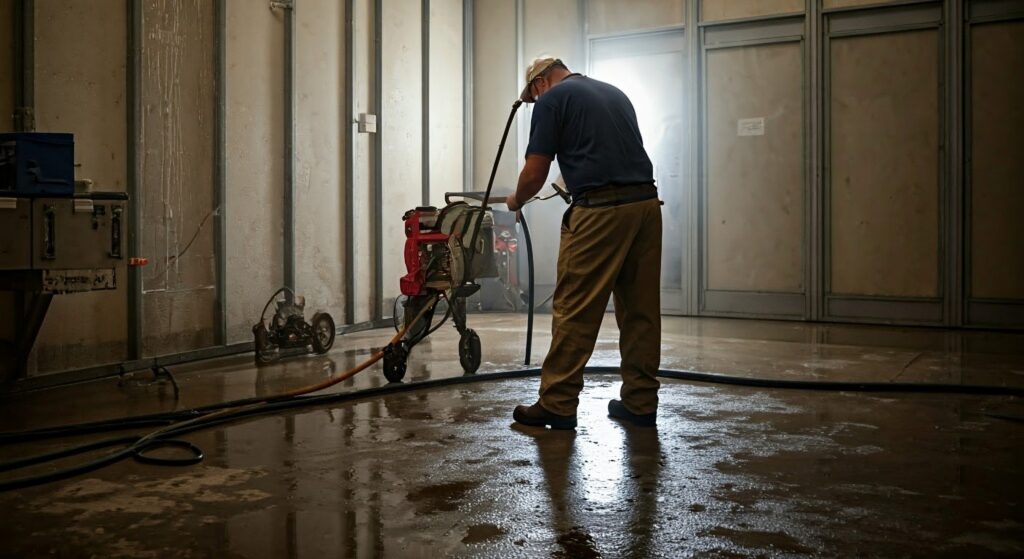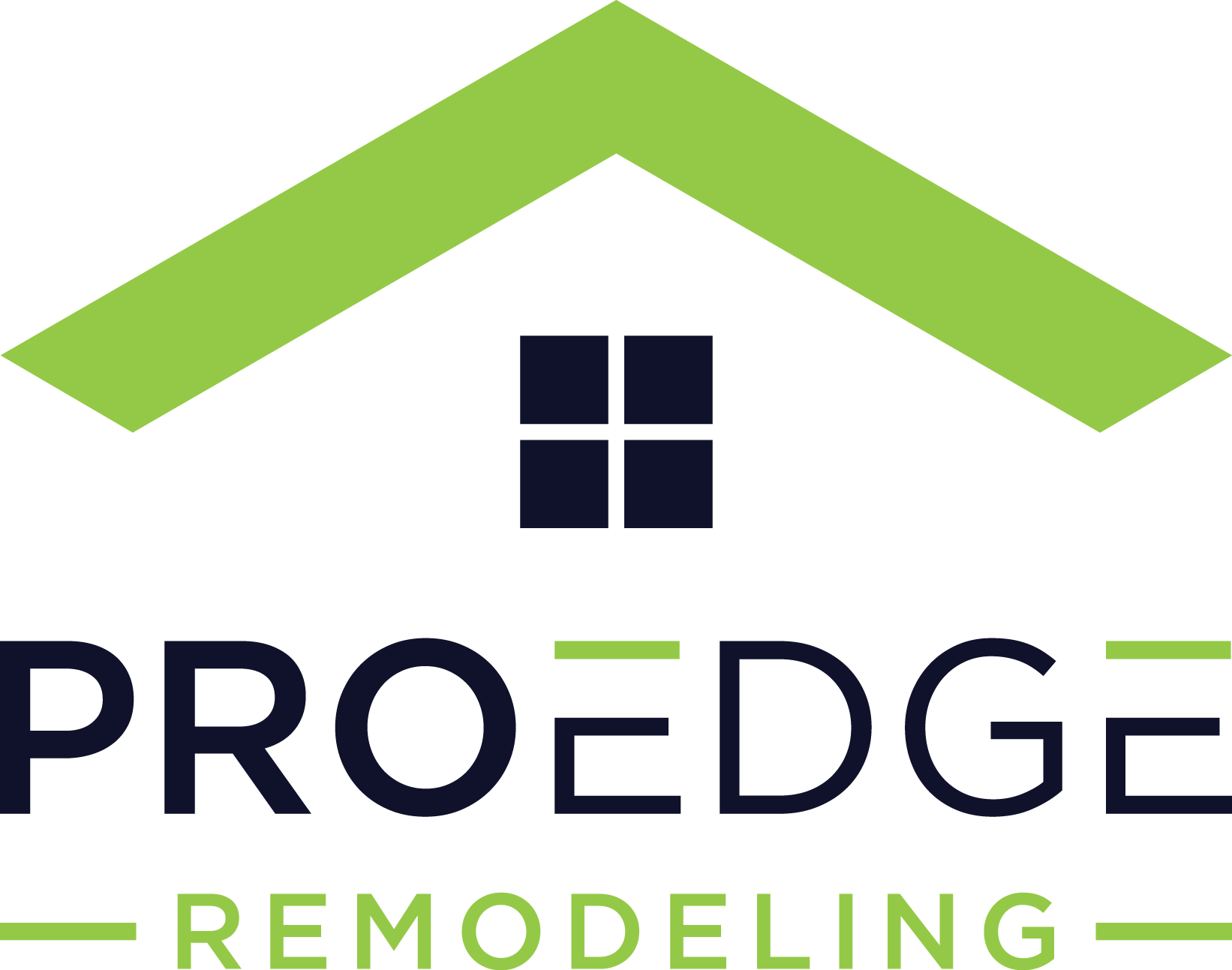Guide to Water Damage Restoration

Water damage is one of those homeowner headaches that can sneak up fast—and cause a lot more trouble than you’d expect. Whether it’s from a leaky pipe, heavy rain, or a busted appliance, water can seriously mess with your walls, floors, and even your home’s structure if it’s not handled quickly.
In this guide, we’ll walk you through everything you need to know about water damage restoration—from the first steps to take when disaster strikes, to how the cleanup process works, what it might cost, and how to prevent it from happening again.
Let’s dive in and get your home back to normal, fast.
Table of Contents
- Common Causes of Water Damage
- Signs of Water Damage in Your Home
- Immediate Steps to Take After Water Damage
- Water Damage Restoration Process Explained
- Cost of Water Damage Restoration
- Importance of Hiring Certified Professionals
- Preventing Future Water Damage
- How to Handle Mold After Water Damage
- Additional Home Improvement Resources
Common Causes of Water Damage
Water damage can happen when you least expect it, and unfortunately, there are quite a few ways it can sneak into your home.
Here are some of the most common culprits homeowners run into:
Burst Pipes and Plumbing Leaks
This one tops the list. A burst pipe or slow, unnoticed plumbing leak can cause major damage in a short amount of time. Whether it’s from old, corroded pipes, freezing temps, or just wear and tear, water can start pooling behind walls or under floors before you even realize there’s a problem.
Roof Leaks and Poor Drainage
Your roof is your home’s first line of defense against the elements—but it’s not invincible. Missing shingles, damaged flashing, or clogged gutters can all lead to roof leaks that drip water into your attic or down your walls. And if water isn’t draining properly around your home, it can start seeping into your foundation, causing even bigger issues.
Flooding from Storms or Natural Disasters
Heavy rain, hurricanes, or even melting snow can cause flash flooding—and unfortunately, your home can’t always stand up to that level of water. Flooding tends to hit fast and hard, leaving behind soaked floors, ruined furniture, and potential mold growth if not handled quickly.
Appliance Failures
Appliances make life easier—until they break down. A busted water heater, overflowing washing machine, or leaky dishwasher can dump gallons of water onto your floors before you even notice.
Sewer Backups
A sewer backup can happen when the system gets overloaded or blocked, causing wastewater to back up into your home. Along with the smell and mess, this kind of damage requires serious sanitization and professional help to clean up safely.
Signs of Water Damage in Your Home
Water damage isn’t always a dramatic flood or a gushing pipe—sometimes, it creeps in quietly. If you know what to look for, you can catch the problem early and save yourself a lot of time, money, and stress.
Here are some common signs that water might be causing trouble behind the scenes:
Visible Stains or Discoloration on Walls and Ceilings
Notice any weird yellow or brown spots? That could be a telltale sign of water lurking above or behind your drywall. These stains usually show up when water has been sitting for a bit, slowly soaking through the surface. Keep an eye out for rings or streaks—they’re often the first visible clue that something’s not right.
Warped Floors or Bubbling Paint
If your hardwood floors are starting to buckle or feel uneven, water might be the reason. Moisture causes wood to expand, which leads to warping or cupping. The same goes for paint—if it’s bubbling, peeling, or flaking off your walls, it could be reacting to damp drywall underneath.
Musty Odors and Mold Growth
That funky, damp smell in the basement? It’s probably more than just “old house vibes.” A musty odor usually means there’s moisture hiding somewhere—and where there’s moisture, mold isn’t far behind. Even if you can’t see mold yet, that smell is your home’s way of telling you to investigate further.
Sudden Spike in Water Bills
Unless you’re suddenly hosting a house full of guests or filling up a backyard pool, a random increase in your water bill is a red flag. It could mean you have a hidden leak—like a dripping pipe inside your walls or a slow-running toilet that’s been silently wasting water 24/7.
Damp or Humid Indoor Air
Does your home feel extra humid even with the windows closed and AC running? That moisture in the air could be a sign of hidden water damage. Over time, too much indoor humidity can lead to condensation, mold growth, and that heavy, uncomfortable air you can’t quite shake.
Spotting these signs early can make all the difference when it comes to water damage. The sooner you notice and act, the easier the fix usually is.
Immediate Steps to Take After Water Damage
Dealing with water damage can feel overwhelming, but acting quickly can make a huge difference in preventing further issues like mold, structural damage, or electrical hazards. If water has suddenly invaded your space, here’s what you should do right away.
Shut Off Water and Electricity
First things first—stop the source of the water, if you can. That might mean turning off the main water supply or closing the valve to a specific appliance. If water is near electrical outlets or appliances, do not touch anything until you’re sure it’s safe.
If there’s any risk, call a pro. But if you can safely access your breaker panel, shut off the electricity to the affected area to avoid shocks or short circuits.
Remove Valuables and Furniture from Affected Areas
Next, get anything valuable or easily damaged out of the wet zone. Move furniture, rugs, electronics, and personal items to a dry area. If something’s too heavy to move right away, try placing aluminum foil or wood blocks under furniture legs to prevent further soaking and staining.
Document Damage with Photos and Videos
Before you start cleaning up, grab your phone and take photos and videos of the damage. Capture everything—the water source, affected floors, walls, furniture, and any ruined belongings. These images will be super helpful when filing your insurance claim and making sure you get reimbursed for the damage.
Contact Your Insurance Company
Once you’ve documented everything, give your insurance provider a call. Let them know what’s happened and start the claims process ASAP. They’ll guide you on what’s covered under your policy, what documentation you’ll need, and whether you’re approved to bring in restoration pros right away.
Call a Professional Water Damage Restoration Service
This is definitely not a DIY situation. A certified water damage restoration team has the tools and know-how to assess the damage, extract standing water, dry everything out properly, and prevent mold. The sooner they get in there, the better your chances of saving your home from long-term damage.
Water Damage Restoration Process Explained
The restoration process might sound complicated, but it’s really just a series of well-planned steps that pros follow to get your home back to normal.
Here’s what typically happens when a water damage restoration team comes in:
Initial Inspection and Damage Assessment
First up, the restoration crew will do a full walkthrough to assess the extent of the damage. They’ll figure out where the water came from, how far it’s spread, and what parts of your home have been affected.
This step is key because it helps them create a detailed action plan—and it also gives you and your insurance company a clearer picture of what to expect in terms of cost and timeline.
Water Removal and Extraction
Once the damage is assessed, the team jumps into action to get rid of the water. They’ll use industrial pumps and wet/dry vacs to extract standing water from floors, carpets, and other surfaces. The faster the water is removed, the less chance there is for mold or structural damage to set in.
Drying and Dehumidification
After the water is gone, the drying process begins. Just because surfaces look dry doesn’t mean the moisture is gone. Restoration pros bring in powerful air movers and dehumidifiers to dry out walls, floors, and even the air itself. This step is crucial for preventing mold growth and long-term damage, especially in areas you can’t see—like behind drywall or under flooring.
Cleaning and Sanitizing
Water damage often brings along dirt, bacteria, and sometimes even sewage. Everything that came into contact with the water—furniture, walls, floors—gets cleaned and disinfected. This helps eliminate odors, stop mold before it starts, and keep your space safe and healthy.
Repairs and Restoration
Once everything is clean and dry, it’s time to fix what got damaged. This could be as simple as patching up drywall or replacing a few floorboards—or as major as rebuilding entire sections of walls, replacing insulation, or redoing flooring. The goal is to get your home looking and feeling exactly like it did before—or maybe even better.
The whole restoration process can take anywhere from a few days to a few weeks, depending on how bad the damage is. But with the right team and a solid plan, your home will be back in no time.
Cost of Water Damage Restoration
Restoration costs can vary a lot, depending on how bad the damage is and what areas are affected.
Here’s a breakdown of what to expect, what can drive the price up (or down), and how to avoid any financial surprises.
Average Cost Ranges Based on Damage Type and Severity
Water damage restoration typically costs anywhere from $1,000 to $8,000, but it can climb much higher depending on the situation.
- Minor leaks with little damage may be on the lower end—think damp carpet or a small area of drywall.
- Moderate damage like soaked flooring, baseboards, or ceilings could push your cost closer to the middle.
- Major flooding or damage that includes multiple rooms, insulation, and structural elements can go well into the tens of thousands.
Bottom line: the quicker you catch and respond to the damage, the less you’re likely to spend.
Factors That Influence Cost
There are a few key things that affect how much you’ll pay for water damage restoration:
- Size of the affected area: More square footage = more time, materials, and labor.
- Type of water: Clean water from a broken pipe is easier (and cheaper) to deal with than gray water from an appliance leak—or worse, black water from a sewer backup, which requires major sanitizing.
- Mold growth: If mold has already set in, remediation adds extra time and cost. Mold cleanup alone can range from $500 to $6,000+ depending on severity.
- Materials involved: Hardwood floors, high-end finishes, or delicate drywall designs will naturally cost more to repair or replace than basic materials.
Insurance Coverage and Deductible Considerations
The good news? Your homeowners insurance might cover water damage, depending on the cause. Sudden and accidental leaks—like a burst pipe or broken appliance—are usually covered.
Make sure you:
- Check your policy for what’s included (and what’s not)
- Know your deductible—the amount you’ll have to pay out of pocket before coverage kicks in
- Take photos and document everything before cleanup begins
Also, consider looking into flood insurance if you live in an area prone to heavy storms or rising water. It’s usually not included in standard policies but can save you thousands down the road.
Tips for Getting Accurate Quotes
Want to avoid sticker shock? Here are a few quick tips for getting solid, reliable quotes:
- Get multiple estimates from certified restoration companies (3 is a good number)
- Ask for itemized breakdowns so you can compare pricing for services like extraction, drying, repairs, etc.
- Make sure the contractor is licensed, insured, and IICRC-certified (that’s the gold standard for restoration work)
- Don’t go with the cheapest option just to save money—experience and reliability matter
While water damage is never fun, understanding the costs and knowing what to expect can help you make smart, confident decisions and get your home back to normal as quickly—and affordably—as possible.
Importance of Hiring Certified Professionals
When water damage strikes, it might be tempting to handle the cleanup yourself—especially if it looks manageable. But here’s the thing: what you see on the surface is often just the tip of the iceberg. Behind those damp floors or stained walls could be hidden moisture, mold growth, or even structural damage. That’s why calling in certified pros is more than just a smart move—it’s essential.
Certifications to Look For (IICRC, etc.)
You’ll want to make sure the restoration team you hire is IICRC-certified (that stands for the Institute of Inspection Cleaning and Restoration Certification). It’s basically the industry standard, and it means the technicians are trained in the best practices for water damage restoration, mold remediation, and proper safety procedures. Other helpful certifications might include EPA lead-safe certifications and mold remediation credentials.
Dangers of DIY Water Cleanup
We get it—grabbing a wet vac and some fans might seem like enough. But unless you know how to check moisture levels behind walls, under floors, and inside insulation, you’re probably missing some of the damage. That can lead to lingering moisture, which quickly turns into mold.
Plus, if you’re dealing with gray or black water, there’s a serious health risk from bacteria and contaminants. Not to mention the risk of slipping on wet surfaces, handling compromised electrical wiring, or making things worse unintentionally.
Benefits of Expert Equipment and Experience
Certified pros show up with tools most homeowners just don’t have—like high-powered extraction vacuums, industrial-strength dehumidifiers, moisture meters, and air scrubbers. These aren’t the kind of gadgets you find in your garage.
On top of that, experienced teams know exactly how to dry, clean, and repair your space quickly and safely, reducing the chances of long-term damage or mold issues. They’ve seen it all before, so they know what to look for—and how to fix it right the first time.
Preventing Future Water Damage
Dealing with water damage once is more than enough—no one wants to go through that stress (or expense) again. The good news is, a little bit of regular maintenance and a few smart upgrades can go a long way in keeping water out of your home for good. Here are some easy, proactive steps you can take to help prevent future water disasters.
Regular Plumbing and Roof Maintenance
Your pipes and roof are two of the most common sources of water damage, so keeping them in good shape is a must. Check under sinks, behind toilets, and around appliances for any signs of leaks.
And don’t forget about your roof. Missing shingles, cracked flashing, or worn-out sealants can let water sneak in. A yearly inspection (especially after a big storm) can catch small problems before they turn into a soggy mess.
Installing Sump Pumps and Water Alarms
If you have a basement, a sump pump is your best friend. It sits in a pit and kicks on automatically when water starts to rise—pumping it out before it floods your space. To add an extra layer of protection, throw in some water alarms in places like under sinks, near your water heater, or behind the washing machine. These little devices will beep if they detect moisture, giving you a heads-up before things get out of hand.
Gutter Cleaning and Landscaping Improvements
Gutters have one job—move water away from your home. But when they’re clogged with leaves, dirt, or whatever the wind blew in, that water can overflow and pool around your foundation. Make it a habit to clean them out at least twice a year, and check that downspouts are directing water at least a few feet away from your home.
Landscaping matters too! If your yard slopes toward your house instead of away from it, rainwater could be seeping into your basement. Regrading the soil or adding a French drain system can help redirect the flow.
Sealing Basement Walls and Windows
Basements are especially prone to water sneaking in through cracks, poorly sealed windows, or weak foundation spots. Sealing the walls with a waterproofing product adds an extra layer of defense, and making sure all your windows are properly caulked and sealed helps keep moisture outside—where it belongs. If your basement’s a living space, this is a must-do.
How to Handle Mold After Water Damage
If there’s one thing you don’t want hanging around after water damage, it’s mold. It doesn’t take long for it to show up—and once it does, it can spread quickly and become a serious headache. The key is acting fast, knowing what to look for, and understanding when to bring in the pros. Let’s break it down.
Mold Growth Timeline and Health Risks
Mold doesn’t waste time. It can start growing within 24 to 48 hours after water damage occurs, especially in warm, humid environments. That means even a small leak that sits unnoticed for a day or two could turn into a full-blown mold problem.
Besides being unsightly and damaging to your home, mold can also pose serious health risks—especially for people with allergies, asthma, or compromised immune systems. Common symptoms include coughing, sneezing, headaches, skin irritation, and even respiratory issues if exposure goes unchecked.
Safe Mold Remediation Practices
If the mold is limited to a small area, you might be able to tackle it yourself with the right safety gear and cleaning supplies. Here are a few tips for safe DIY mold cleanup:
- Wear gloves, goggles, and an N95 mask to protect yourself
- Use soap and water or a mold-specific cleaner (avoid mixing bleach with other cleaners—it’s dangerous)
- Scrub the mold off non-porous surfaces like tile or glass
- Toss any porous materials (like carpet or ceiling tiles) that are moldy—they’re tough to fully clean
- Dry the area thoroughly afterward to prevent regrowth
That said, mold can hide in insulation, drywall, and behind baseboards—so what looks like a small problem might be bigger than it seems.
When to Call a Mold Specialist
If you’re dealing with a large or persistent mold problem, or if it keeps coming back even after you clean it, it’s time to call in a mold remediation specialist. Same goes if:
- The mold covers a large area (more than 10 square feet)
- It’s growing in your HVAC system
- You’re not sure where the moisture source is coming from
- You or someone in your home is experiencing ongoing health issues
Professionals have the equipment to detect hidden mold, safely remove it, and make sure it doesn’t come back. They’ll also help you figure out what caused it in the first place so you can fix the root problem.
When it comes to mold, the sooner you act, the better. Catching it early can save your home (and your health) from a lot of long-term damage. So if you suspect mold after water damage, don’t wait—get it checked out and taken care of the right way.
Conclusion
Water damage is never fun—but knowing how to handle it can make all the difference. From spotting the early warning signs to understanding the cleanup process, getting familiar with the basics can save you time, money, and a whole lot of stress.
The biggest takeaway? Act fast. The sooner you address water damage, the less likely it is to cause long-term issues like mold or structural damage. And while it might be tempting to DIY, bringing in certified professionals ensures the job gets done safely and thoroughly.
To keep your home protected for the long haul, stay on top of maintenance—check your roof, inspect your plumbing, clean those gutters, and consider adding tools like sump pumps and water sensors. A little prevention goes a long way.
If water damage ever hits your home, don’t panic—you’ve got the knowledge and the resources to handle it like a pro.
Additional Home Improvement Resources

Anna has over six years of experience in the home services and journalism industries and serves as the Content Manager at MyHomePros.com, specializing in making complex home improvement topics like HVAC, roofing, and plumbing accessible to all. With a bachelor’s degree in journalism from Auburn University, she excels in crafting localized, comprehensive guides that cater to homeowners’ unique needs. Living on both coasts of the United States has equipped her with a distinctive perspective, fueling her passion for turning any house into a cherished home through informed, personalized decision-making.
Connect with top-rated local contractors who can help you with siding, roofing, HVAC, windows, and more. Get free quotes from verified professionals in your area today.








